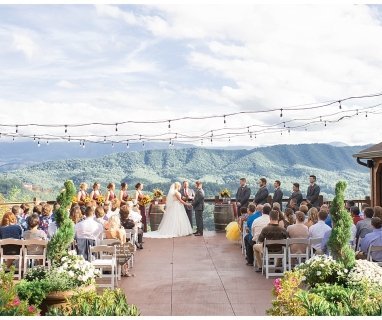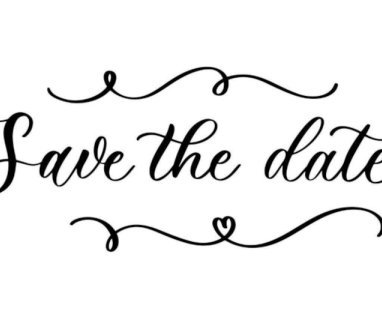Few events in a person's life can match the excitement of their wedding day. For many, it's a once-in-a-lifetime occasion that remains etched in their memory forever. Fundamentally, a wedding is a celebration of love and togetherness, with everything from table settings to bridal shoes meticulously arranged. However, throughout history, marriage has been intertwined with various other aspects. In the past, when survival was more challenging, marriages served to reinforce inter-clan bonds, thus ensuring the continued existence of both families in difficult times. Nonetheless, the concept of romantic love has always been linked to marriage, as evidenced by couples such as Mr. Darcy and Elizabeth or Romeo and Juliet.
In contemporary times, the political aspect of marriage has come to the forefront, with the legalization of same-sex marriages in many countries leading to a redefinition of the terms 'marriage' and 'wedding'. Along with this change, wedding traditions are also being reimagined. As marriage holds significant importance in numerous cultures worldwide, there are many customs associated with the act of tying the knot. However, traditions seldom age gracefully and often evolve with the times. In this article, we explore some inventive updates to age-old wedding customs from various cultures. But first, let's delve into the nature of wedding traditions and examine some exquisite examples.
Wedding Traditions Through Time
Most cultural events we witness are steeped in traditions that have evolved over time. From the bride's bouquet to the age-old adage "Something Old, Something New, Something Borrowed, Something Blue", weddings are steeped in customs. Traditions typically reflect the material conditions and contexts of a specific era. However, the past and future need not be at odds. Increasingly, couples are discovering ways to blend their histories with their aspirations. While some customs may have outlived their usefulness, others are being adapted and personalized by modern couples. Today's lovebirds still wish to honor their heritage but want to infuse their own stories into their celebrations. As a result, we are witnessing an increasing number of couples putting fresh spins on conventional wedding practices, resulting in a delightful fusion that is a joy to behold. Some traditions still add a touch of charm to your big day, and the contemporary tweaks featured here ensure they remain relevant and enjoyable.
Contemporary Updates to Time-Honored Wedding Customs
Below are some inventive takes on traditional wedding customs from around the world:
Dividing the Costs
The financial responsibility of a wedding ceremony has often been determined by cultural norms. Traditionally, the bride's family would bear the cost of the wedding. However, this practice is changing, as no one wants to place undue financial strain on one family. Nowadays, both families frequently contribute to the wedding expenses, and modern couples often prefer to finance their own nuptials. This shift in practice reflects the growing sense of equality in today's world and the evolution of marriage from its roots in arranged unions.
Rethinking the White Dress
Ever since Queen Victoria popularized the white wedding gown, it has become the standard choice for brides around the globe. However, many modern brides are now opting for daring, vibrant alternatives to the traditional white dress. Designers now offer wedding gowns in subtle, sophisticated shades that don't stray far from white, allowing brides to infuse a hint of color into their ensembles. Consider trying soft pinks, blush, blues, or even muted greys for a unique look. If you're a bride committed to wearing white, there are still numerous ways to stand out, such as choosing a non-traditional bridal outfit like a pantsuit.
Evolving Gift-Giving Practices
Gift-giving has been a part of marriage since its inception in ancient times, the dowry system was common across many cultures, where one family, often disadvantaged, would present a portion of their wealth to the other family on the wedding day. In some cultures, the groom's family was typically the recipient. While this practice may have served a purpose in the past, it often placed one family in an unfavorable position.
Today, both families exchange gifts as a gesture of goodwill. Receiving gifts from guests is another common practice, which can help cover some wedding expenses. While the tradition of gift-giving is unlikely to disappear, there are ways to modernize it by adding creativity and personal touches. For example, you can present your partner with a sentimental gift, such as a piece of your own artwork. Additionally, more families are opting for a "no gift" policy, encouraging guests to contribute to a charity they care about or fund their honeymoon trip instead.
Redefining Cake-Cutting
The custom of breaking a loaf of bread over the bride's head to symbolize fertility dates back to ancient Rome. Guests would collect the crumbs for good luck, and the newlyweds would share a few bites. In medieval England, the bride and groom had to attempt to kiss over a stack of tiered spiced buns, scones, and cookies—precursors to today's multi-tiered wedding cakes—believing that doing so without toppling the stack would ensure a prosperous future. Although wedding cakes have evolved significantly over time, they remain popular. However, an increasing number of couples are exploring alternative options. One such example is choosing ice cream cakes instead of traditional vanilla cakes, although this may not be suitable for weddings in warmer climates. Alternatively, couples can forgo the cake entirely, opting for a donut or cookie cake or even cutting into a brownie or apple pie. The possibilities are endless, limited only by your imagination.
Preserving a Piece of Your Cake
Traditionally, couples would save and freeze the top tier of their wedding cake to enjoy later, often at their first child's christening. It was common for couples to have a child within a year of their marriage, so saving the cake saved them from purchasing a new dessert for the christening or birth celebration. Nowadays, some couples choose to revisit the bakery that made their wedding cake on their first anniversary and order a cake with the same flavors, allowing them to relive the moment without freezing and storing the original cake.
As wedding traditions evolve and adapt to modern times, couples are finding new and inventive ways to honor their past while incorporating their own unique stories. By blending time-honored customs with contemporary updates, today's weddings can be both meaningful and enjoyable for everyone involved.
Rethinking the Bouquet Toss
The bouquet toss has gained a negative reputation due to its portrayal in popular culture. Originally symbolizing the next person to marry, the bride would throw her flower bouquet behind her for guests to catch. However, as the notion of marriage has become less popular, some guests may feel uncomfortable with this tradition. To avoid negative experiences, consider asking guests if they would like to participate or skip the tradition altogether. Alternatively, you could throw a bouquet of individual flowers, so everyone receives a flower instead of just one person.
Refreshing Toasts
Toasts don't always have to focus on the newlyweds; they can also involve the guests. To make your guests feel included, consider toasting someone who might be feeling left out. Although the wedding day should primarily be about the couple, creating a positive experience for everyone can lead to a more memorable event. Encourage guests to make toasts to one another, the bride and groom, or even offer an open space for anyone to speak.
Creative Interpretations of "Something Old"
The well-known wedding tradition "Something Old, Something New, Something Borrowed, Something Blue" calls for the bride to wear items that fit these categories. Traditionally, brides often choose jewelry for the first three categories. However, you can put your own spin on this tradition. For example, arrive in a blue car, borrow shoes from a bridesmaid, or carry a childhood toy to represent something old. The possibilities are endless; choose items that hold emotional significance for you and your partner.
Redefining the Getaway Vehicle
The tradition of the couple leaving the wedding in a decorated vehicle is present in many cultures. However, the getaway vehicle doesn't have to be a car. Make a statement with a motorcycle, bicycle, or even walking away from the venue, depending on its proximity to your accommodations. Alternatively, use a family heirloom vehicle for added sentimentality.
Personalized Wedding Vows
In the past, wedding vows were sacred and predetermined. Today, with weddings becoming less religious, couples often incorporate personal elements into their vows. Writing your own vows can be a meaningful way to express your feelings, whether through poetry, humor, or reminiscing. Your words will carry more weight and resonate with your partner.
Reimagining the Veil
The custom of wearing a wedding veil dates back to ancient Rome when brides wore veils to protect themselves from evil spirits. Veils now come in various styles and lengths, but some brides opt for no veil at all to ensure freedom of movement and showcase their wedding look.
Alternative Approaches to "Giving Away the Bride"
Traditionally, the bride's father "gives her away" during the wedding ceremony, symbolizing the transfer of ownership from arranged marriages. This practice has evolved into a touching moment between a father and his daughter. However, you can add a personal twist by having your mother, both parents, or a sibling accompany you down the aisle.
Rice Toss Alternatives
Tossing rice at the end of the ceremony signifies wealth, fertility, and good fortune. Although rice poses minimal risk to birds, some couples choose to use bubbles or confetti for their sendoff instead.
Reconsidering the Garter Toss
The garter toss originated in England and France when guests sought pieces of the bride's dress for good luck. To alleviate the bride's anxiety about her dress being ruined, grooms began tossing parts of her attire to distract guests. Many modern couples now skip the garter toss due to its potentially inappropriate and uncomfortable nature. If you're not a fan of the garter toss, consider tossing the boutonniere instead.
Innovative Guestbooks
Guestbooks have evolved beyond their originalpurpose as simple books. Today, many couples choose more creative and display-worthy options, such as custom signs for guests to leave messages on or personalized wine bottles filled with notes. Other unique guestbook ideas include minimalist paintings that guests can sign with metallic permanent markers or a large photo of the couple printed on a canvas for guests to write on.
Updated Bridesmaid Dress Styles
Matching bridesmaid dresses may seem outdated, but this tradition dates back to Roman times when bridesmaids dressed similarly to the bride to confuse evil spirits. Nowadays, you can create a cohesive theme without being too rigid by having bridesmaids wear the same color but different styles. Alternatively, consider using matching accessories instead of identical outfits to create a unified yet intriguing look.
Ultimately, weddings are deeply personal events, allowing you to choose which traditions and customs to keep or discard based on your beliefs and preferences. Embrace the aspects you love and feel free to leave out those that don't resonate with you. Remember, it's your special day and your love story that you'll be looking back on for years to come. Many wedding traditions can be modernized with a creative twist, so don't be afraid to add your personal touch to societal norms. Love knows no bounds, and your dream wedding day should be no different!



